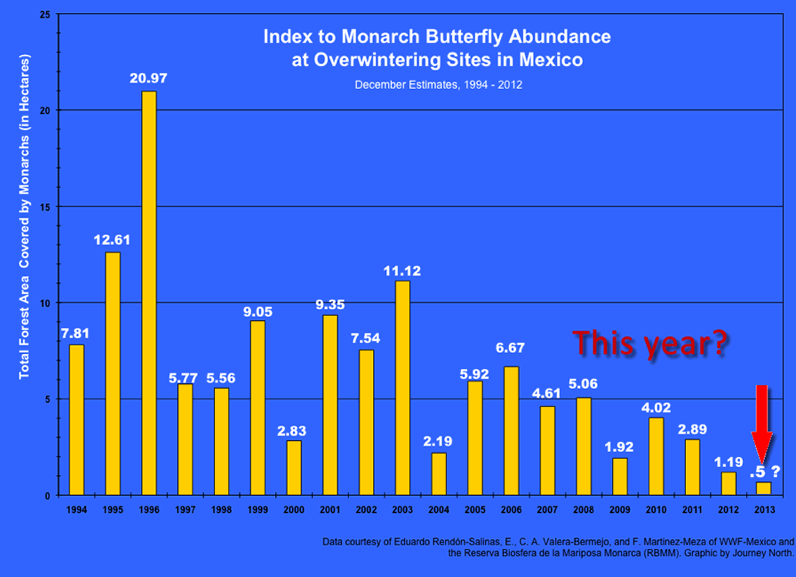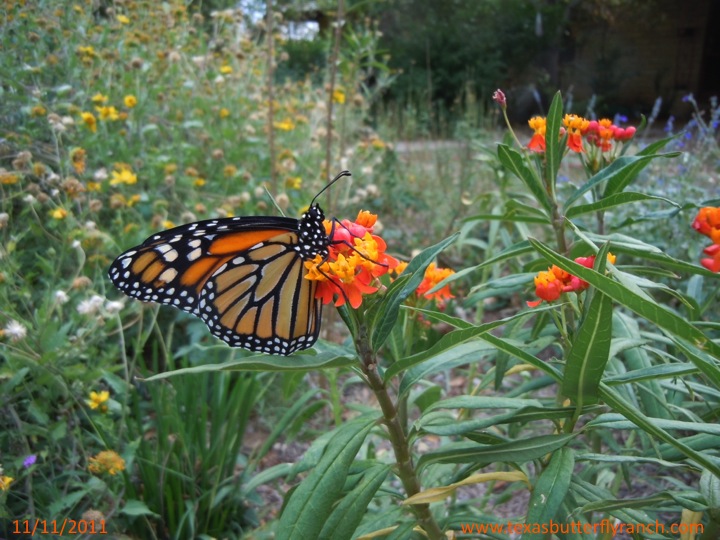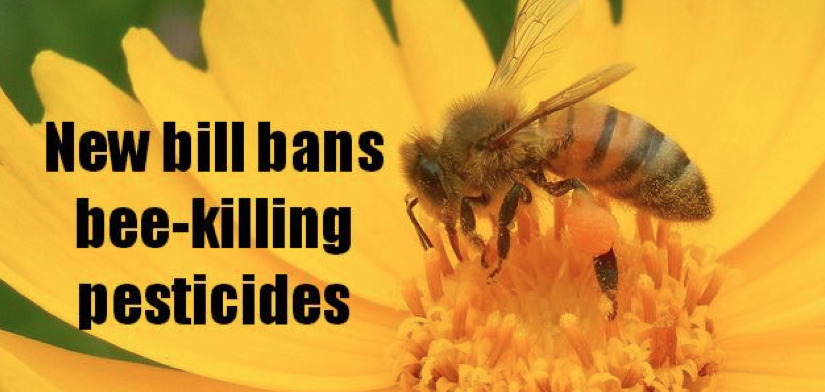The dismal state of the Monarch butterfly migration came into closer focus this week, as reports from Mexico suggest that only three million butterflies had arrived at the ancestral roosts in Michoacán for Day of the Dead, their usual arrival time, the New York Times reported. The 2012 season, acknowledged as the worst year for the insects population wise, counted 60 million Monarchs. In prime years, they numbered 450 million.
Video may be as good as it gets from now on, when it comes to observing the Monarch butterfly migration. Enjoy this one, taken in 2007, by Jesse Waugh.
Dr. Chip Taylor, founder of Monarch Watch, relayed a similar prognosis two weeks ago, addressing the International Butterfly Breeders conference. Dr. Taylor stated that the butterflies would likely occupy only 1.25 acres of forest in the mountainous roosting grounds west of Mexico City. At their height, the creatures roosted in 50+ acres of forest. How depressing that the entire population of Monarch butterflies east of the Rocky Mountains could fit into a space smaller than a strip shopping center.

Only three million Monarchs made it to Mexico this year and may occupy only 1.25 acres of forest this year, a record low. Graph via Journey North
Each December, scientists measure the hectares occupied by the migrating butterflies at their ancestral overwintering sites in the mountains of Michoacán to determine the size of their population. (NOTE: one hectare equals 2.47 acres.)
Our friend and Monarch butterfly expert Dr. Lincoln Brower, quoted in the New York Times, forwarded an email from Mexico to the D-PLEX list (an email list for butterfly enthusiasts) last week.
“What I find worrisome is the late arrival of the butterflies,” wrote Dr. Brower, adding that the butterflies usually arrive in force at the very beginning of November. Concern resulted when for the first time in recorded history, the Monarchs did not arrive in time for Day of the Dead celebrations in Mexico. Here’s an excerpt from the email:
The monarch population is very low, the trees are not fully covered by monarch like in past years. In Chincua, there are approximately 14 trees, in Rosario, a similar number of trees was found, however in the past few days there was a cold front that entered the country, there were trees that fell down as a result of the strong winds, especially in Rosario, right in the middle of the monarch colony. The colony at Pelon is still wandering about and also with very low numbers.
But we also need to encourage our lawmakers to approve the Save America’s Pollinators Act, H.R. 2692. The bill would ban neonicotinoid pesticides, introduced three decades ago without appropriate field study to its side effects. The newcomer pesticide, often referred to as the “new DDT,” is the first new class of pesticides introduced in the last 50 years and while apparently
- Neonicotinoid residues are found in pollen and nectar consumed by pollinators such as bees and butterflies. The residues can reach lethal concentrations in some situations.
- Neonicotinoids can persist in soil for months or years after a single application. Measurable amounts of residues were found in woody plants up to six years after application.
- Untreated plants may absorb chemical residues left over in the soil from the previous year.
- Products approved for homeowners to use in gardens, lawns, and on ornamental trees have manufacturer-recommended application rates up to 120 times higher than rates approved for agricultural crops.
Recent research suggests that neonicotinoids can cause increased levels of proteins in bees that inhibit key molecules involved in their immune response, making the insects more susceptible to attack by harmful viruses. The much publicized Colony Collapse Disorder, which has decimated the bee population, has been linked to neonicotinoids as well.
Insects like bees and butterflies are responsible for pollinating 75 percent of our food crops–one of every three bites of food you take. Shortages of bees have increased the cost of growing food because farmers must rent them for pollination services, resulting in food cost production increases by as much as 20%.
Please help protect bees, butterflies and other important pollinators by supporting H.R. 2692, the Save America’s Pollinators Act. They are the glue that binds our ecosystem. Sign the petition now. And in the meantime, plant some milkweed.
More posts like this:
- Chip Taylor to Butterfly Breeders: Monarchs to Occupy only 1.25 acres this year
- Founder of the Monarch Roosting Spot Lives a Quiet Life in Austin, Texas
- On the Trail in Michoacán
- Yo Soy Mariposista!
- Milkweed Guide: Choose Best Plants for Monarch Butterflies
- How to Raise Monarch Butterflies at Home
- Part II: More Tips on Raising Monarch Caterpillars and Butterflies at Home
- FOS Monarch Lays Eggs in San Antonio Urban Garden
- Tropical Milkweed: To Plant it or Not is No Simple Question
- Oh Those Crazy Chrysalises: Caterpillars in Surprising Places
- Butterfly FAQ: Is it OK to Move a Chrysalis? Yes, and here’s how to do it
- Should You Bring in a Late Season Caterpillar into Your Home?
Like what you’re reading? Don’t miss a single post from the Texas Butterfly Ranch. Sign up for email delivery, like us on Facebook, or follow us on Twitter, @monikam.



The monarch colonies in Michoacan are not censused until December. So it’s misleading to claim – in November – that “only 3 million monarchs have made it to Mexico this year.”
I wonder:
— what accounts for the oddly high number (20+ forested hectares covered by monarchs) in 1996 reported on the graph at the site;
— if neonicotinoid pesticides are to blame, is there a similar dropoff in numbers of monarchs west of the Rockies; and
— why the site showed Tropical milkweed (Asclepias curassavica – Zones 9-11) instead of its more widespread look-alike Butterfly weed (Asclepias tuberosa Zone 3-9)
I searched many common milkweed plants this year (northeast Mn.) and found no sign of Monarchs on any of them. I have large perennial butterfly gardens, and in the 2013 season, saw only a handful of Monarchs.
[…] This post from Monika at Texas Butterfly Ranch details the situation with the monarchs. Here are some highlights: […]
[…] Texas for the beautiful monarchs as they travel to and from Mexico! For more information, check out this post from Monika at Texas Butterfly Ranch, which details the situation with the monarchs. Here are some […]
[…] Texas for the beautiful monarchs as they travel to and from Mexico! For more information, check out this post from Monika at Texas Butterfly Ranch, which details the situation with the monarchs. Here are some […]